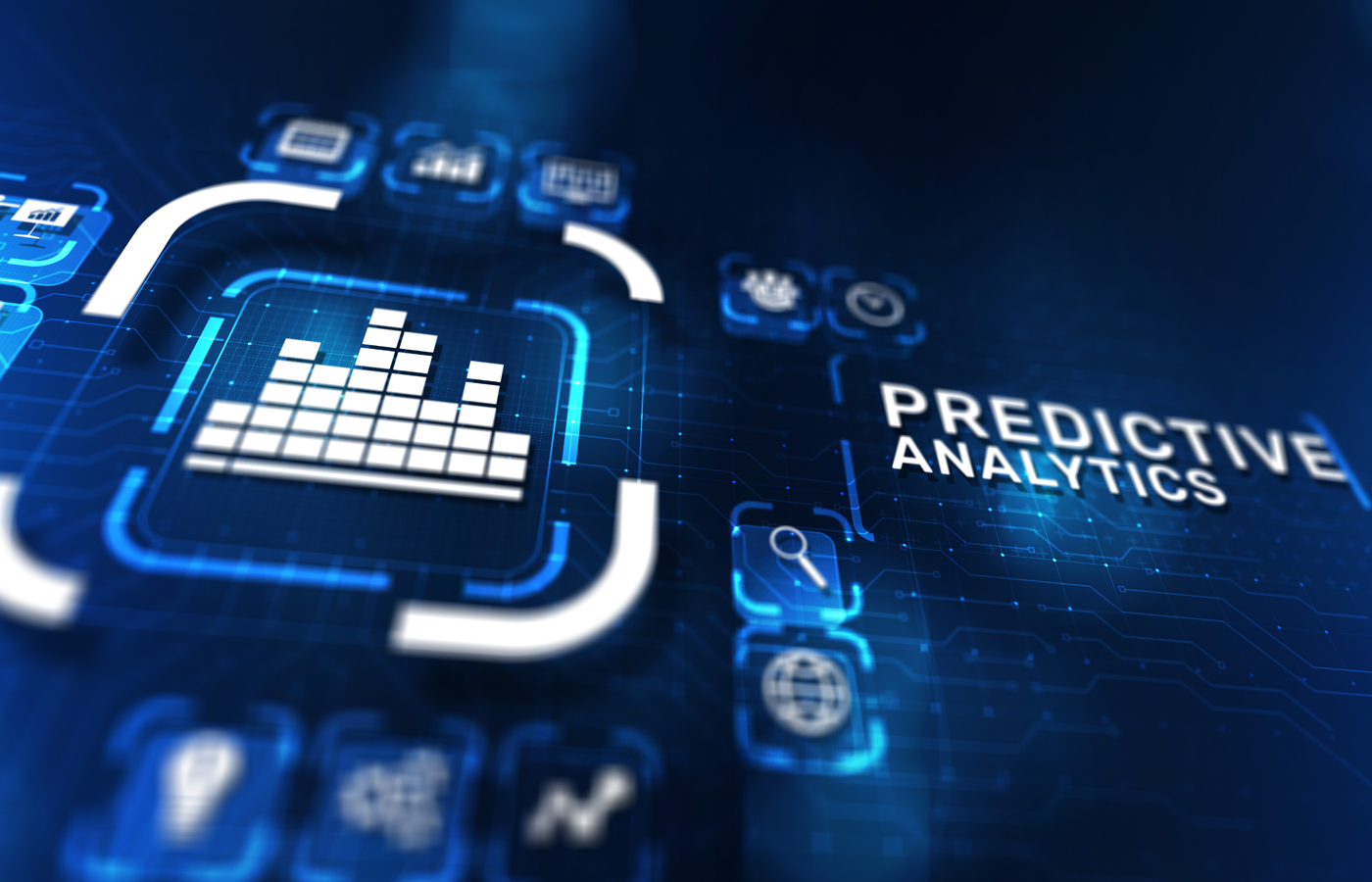Data analytics is a broad term that encompasses the collecting and/or extracting, transforming, and organizing of data in order to draw conclusions and interpretations, make accurate predictions, and drive informed and strategic decision-making. Data may be the new oil in the digital economy, but like oil, data without refinement provides little value. The value of data lies not just in its abundance but in its ability to provide valuable insights when analyzed effectively.
In this article, we will delve into the world of data analytics, exploring its definition, methodologies, applications, and the transformative impact it can have on decision-making processes across industries. We’ll explain the basics of data analytics, including what data analytics is, how to use it, and the types of data analysis available.
What Is Data Analytics?
A wealth of data can offer countless hidden insights—but extracting them in meaningful form requires the proper tools and methodologies. This is where data analytics comes in. In practice, data analytics involves using software tools and mathematics to analyze raw data, incorporating various statistical, mathematical, and computational techniques. The discipline itself can be broadly categorized into three main types: descriptive analytics, predictive analytics, and prescriptive analytics.
Descriptive Analytics
Descriptive analytics is the foundational level of data analytics. It provides a summary of historical data—critical information for understanding how past events, patterns, and trends led to the current state of affairs. By summarizing and visualizing this data, descriptive analytics empowers decision-makers to make informed choices, identify opportunities, and optimize processes.
The main objectives of descriptive analytics include the following:
- Understanding–comprehending historical data and identifying trends, patterns, and relationships within the data
- Summarizing–presenting an overview of key insights, helping to quickly grasp essential information
- Reporting–generating reports and dashboards to communicate insights effectively
- Data exploration–exploratory data analysis for addressing analyst inquirings, uncovering hidden patterns, and gaining initial insights
Challenges and Limitations of Descriptive Analytics
While descriptive analytics is a powerful tool for data exploration and understanding, it has some limitations.
Lack of Predictive Insights
Descriptive analytics deals with historical data and does not provide insights into future trends or predictions.
Limited Context
Descriptive analytics focuses on what happened but may not always provide the “why” behind the patterns observed.
Dependency on Data Quality
Accurate and reliable data is essential for meaningful descriptive analysis, with poor data quality more often resulting in faulty conclusions.
Insights vs. Actions
Descriptive analytics may provide valuable insights, but organizations must take further steps to turn these insights into actionable strategies.
Descriptive analytics lays the foundation for data-driven decision-making by providing a retrospective view of past events and data patterns. To unlock the full potential of data, however, organizations need to move beyond descriptive analytics to more advanced levels of data analytics, including predictive analytics and prescriptive analytics.
Predictive Analytics
Predictive analytics is a type of advanced analytics that uses historical data, statistical modeling, and machine learning (ML) algorithms to predict future outcomes. By identifying patterns in historical data using advanced statistical algorithms and machine learning techniques, predictive analytics empowers businesses, governments, and various industries to more effectively forecast trends, mitigate risks, and optimize processes.
Chiefly, predictive analytics involves the following:
- Data collection–data gathering and aggregation from various sources, including customer interactions, sales transactions, social media, sensors, and more
- Data preprocessing–prior to feeding the data into predictive models, preprocessing steps (e.g., cleaning, transformation, feature engineering) are carried out to ensure data quality and consistency
- Model development–predictive models are constructed using a variety of techniques (e.g., regression analysis, decision trees, neural networks) and trained on historical data
- Model evaluation–predictive model performance is evaluated using metrics like accuracy, precision, recall, and F1 score
- Model fine tuning–models are refined and fine-tuned to improve their predictive capabilities.
- Deployment–once refined, models are deployed/operationalized and data is fed into the model to real-time inferences
Challenges and Limitations of Predictive Analytics
Despite offering substantial advantages over descriptive analytics, predictive analytics has several challenges and limitations:
Data Quality
Predictive analytics hinges on data quality; poor data quality (e.g., missing values, inaccuracies) can lead to erroneous predictions.
Model Interpretability
Complex predictive models, such as those in deep learning neural networks, may lack transparency and interpretability, making it difficult to understand their decision-making process.
Overfitting
Erroneous predictions can occur when a model performs exceptionally well on training data but fails to generalize well on new data.
Computational Resources
Large datasets and computationally intensive algorithms are required for predictive analytics, resulting in large capital IT expenditures.
Prescriptive Analytics
Unlike descriptive analytics, which focuses on understanding past events, and predictive analytics, which forecasts future trends, prescriptive analytics goes a step further by suggesting optimal courses of action. By analyzing historical and real-time data, predictive analytics provides valuable recommendations for achieving a set of desired objectives.
Chiefly, prescriptive analytics involves the following:
- Optimization–discovering the ideal solution from a set of available alternatives, optimizing outcomes while considering constraints
- Decision support–providing decision-makers with data-driven recommendations, enabling more well-informed, effective choices
- Scenario analysis–enabling decision-makers to simulate various scenarios for exploring potential outcomes of different actions
Challenges and Limitations of Prescriptive Analytics
While prescriptive analytics offers significant advantages over descriptive and predictive analytics, its implementation comes with several challenges:
Data Quality
Like descriptive analytics, prescriptive analytics relies heavily on accurate and reliable data for creating meaningful and accurate insights and recommendations.
Data Integration
Integrating data from various sources and systems can be complex, requiring robust data integration strategies and tools.
Algorithm Selection
Selecting the right algorithms for prescriptive analytics can be challenging and may require expertise in data science and machine learning.
Interpretability
Some prescriptive analytics models may provide optimal solutions without clear explanations, making it difficult for decision-makers to understand the reasoning behind the recommendations.
Data Analytics Methodologies
Data analytics involves a structured process that includes several methodologies and techniques to extract meaningful insights from raw data. The typical data analytics process includes the following stages.
Data Collection
The first step is to gather the relevant data from the various relevant sources (e.g., databases, spreadsheets, social media, sensors, any other data-producing systems). Data can either be structured (e.g., stored in an relational database, or RDBMS) or unstructured (e.g., freeform text, images, videos, and more).
Data Cleaning and Preprocessing
Raw data is often noisy, incomplete, or inconsistent. Data cleaning involves removing errors, duplicates, and irrelevant information, ensuring the data is reliable and accurate for analysis.
Data Exploration and Visualization
Data exploration involves visually inspecting and summarizing the data to identify patterns, trends, and relationships. Data visualization tools help represent data in graphs, charts, and dashboards, making it easier to comprehend and analyze.
Data may need to be transformed into a suitable format for analysis. Common data preparation processes and transformations include normalization, aggregation, and feature engineering, to name a few.
Data Analysis and Modeling
In data analysis and modeling, various statistical and machine learning algorithms are applied to the data for analysis and model building, ultimately helping to drive predictions or uncover insights.
Interpretation and Communication
Once data analysis and modeling is complete, the findings are interpreted and insights are communicated to relevant stakeholders via reports, presentations, or interactive visualizations.
The Data Analyst Job Role
At the helm of the data analytics dashboard is the data analyst, a skilled professional that examines and interprets data to uncover patterns, trends, and meaningful information.
The key responsibilities of a data analyst include:
- Data collection–gathering relevant data from multiple sources, including databases, spreadsheets, and APIs
- Data cleaning and preprocessing–cleaning and organizing data to remove errors, duplicates, and inconsistencies
- Data analysis–applying statistical and analytical techniques to interpret data and uncover insights
- Data visualization–presenting data visually through charts, graphs, and dashboards
- Reporting and presentation–preparing reports and presentations to communicate findings and recommendations to stakeholders
Data analysts utilize a range of tools and technologies to perform their tasks efficiently. Here are some of the most common:
- Data visualization tools–business intelligence and visualization tools (e.g., Tableau, Power BI) are used to create interactive, visually appealing charts and graphs
- Programming languages–popular programming languages for data manipulation, analysis, and modeling like Python and R
- SQL–Structured Query Language (SQL) for querying and managing relational databases
- Microsoft Excel–commonly used for simple data cleaning, manipulation, and basic data analysis
- Statistical software–software packages like SPSS and SAS are commonly used for advanced statistical analysis
- Machine learning libraries–libraries like scikit-learn and TensorFlow are used for building machine learning models
The Impact of Data Analysts on Decision-Making
Data analysts play a crucial role in shaping data-driven decision-making processes within organizations. Their impact can be seen in various aspects:
Business Intelligence
Data analysts provide insights into market trends, customer behavior, and operational efficiency, contributing to strategic business planning.
By analyzing performance metrics, data analysts identify opportunities for improvement and efficiency optimization.
Risk Assessment
Data analysts help identify potential risks and vulnerabilities, guiding organizations in risk management strategies.
Customer Insights
Through customer data analysis, data analysts uncover valuable insights that enable personalized customer experiences and targeted marketing efforts.
Product Development
Data analysts gather and analyze product feedback, leading to product improvements and innovations.
Career Opportunities in Data Analytics
Data analytics is a dynamic field with a wide range of career opportunities. Here are some of the most common roles.
Business Analyst
Business analysts work closely with stakeholders to gather requirements, analyze data, and provide insights for business decision-making.
Market Research Analyst
Market research analysts conduct data analysis to understand market trends, consumer preferences, and competitive landscapes.
Financial Analyst
Financial analysts analyze financial data to provide insights into investment decisions, budgeting, and financial forecasting.
Healthcare informatics specialists and data analysts work with medical data to improve patient outcomes, optimize healthcare processes, and support medical research.
Data Scientist
Data scientists use advanced statistical and machine learning techniques for complex data analysis and predictive modeling.
In today’s world of data-driven decision-making, data analysts play a crucial role in organizations looking to maximize the value of their data assets. And as data continues to grow in volume and complexity, the role of data analysts will also continue to evolve, incorporating new AI/ML methods and tools as they come to market.
Learn more: Data Analytics vs. Data Science
Applications of Data Analytics
Data analytics has far-reaching applications across numerous industries and domains, revolutionizing the way decisions are made and processes are optimized. Some key applications of data analytics include:
Business Intelligence
Data analytics drives business intelligence by helping organizations gain insights into customer behavior, market trends, and operational efficiency. These insights are critical for strategic planning, resource allocation, and growth opportunity identification purposes.
Healthcare
Data analytics is transforming healthcare by enabling personalized medicine, predicting disease outbreaks, and improving patient outcomes through data-driven diagnosis and treatment plans.
Finance and Banking
In the financial sector, data analytics is used for fraud detection, risk assessment, credit scoring, and investment strategies, enhancing decision-making and mitigating financial risks.
e-Commerce and Retail
Data analytics plays a crucial role in e-commerce and retail by optimizing inventory management, predicting customer preferences, and improving supply chain efficiency.
Manufacturing
In manufacturing, data analytics is employed for predictive maintenance, quality control, and process optimization, reducing downtime and increasing productivity.
The Role of Artificial Intelligence in Data Analytics
AI/ML has become a pillar of the data analytics field, enabling data analysts to go beyond traditional statistical methods with tasks like pattern recognition, natural language processing, and decision-making. Leveraging advanced machine learning algorithms, organizations can analyze vast datasets, recognize complex patterns, and make accurate predictions or classifications.
Learning and Extracting Meaning
Supervised learning, unsupervised learning, and reinforcement learning are some of the key machine learning approaches used in data analytics. NLP, another subdiscipline of AI, enables data analytics to process and analyze unstructured data, such as text, speech, and social media content. Sentiment analysis, text classification, and language translation are examples of NLP applications in data analytics.
Challenges and Ethical Considerations
While data analytics offers immense potential, it also presents several challenges and ethical considerations:
Data Quality and Bias
Data quality issues, such as inaccuracies and incompleteness, can lead to biased analysis and flawed insights. Data analysts must be vigilant in ensuring data integrity and addressing any inherent biases in the data.
Data Privacy and Security
The increasing volume of data raises concerns about data privacy and security. Organizations must implement robust security measures to protect sensitive data from unauthorized access or breaches.
Regulatory Compliance
Data analytics often involves dealing with personal or sensitive data, which is subject to various data protection laws and regulations. Organizations must comply with relevant data privacy laws, such as the General Data Protection Regulation (GDPR) in the European Union; stateside, local/regional legislation like California’s California Consumer Privacy Act (CCPA) serves a similar data compliance function as GDPR.
Interpretation Bias
Data analysis is subject to interpretation, and biases can inadvertently influence the conclusions drawn from the data. Data analysts should be aware of their biases and strive for objectivity in their analyses.
Conclusion
Data analytics is a powerful tool that empowers data professionals to make data-driven decisions and unlock valuable insights from vast amounts of data; in turn, organizations can understand their customers better, optimize processes, and achieve new operational efficiencies. By leveraging data analytics effectively and ethically, organizations can harness the true power of data to drive positive outcomes for gaining and maintaining a competitive edge.
Read next: What Is Data Sovereignty and Why Does it Matter?




